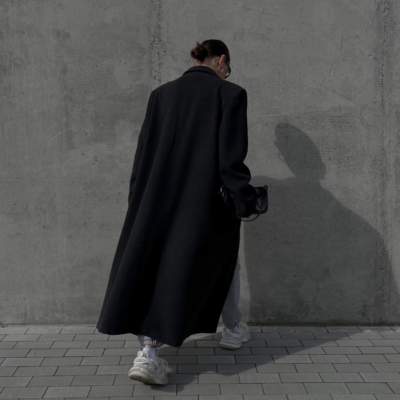1. Introduction — A Brand That Beautifies the Past
Each year, CHANEL’s Métiers d’Art collection turns its gaze toward a particular city or culture.
But rather than simply drawing inspiration, the collection engages in what might be called a curatorial act of cultural editing—reviving forgotten crafts and untold beauty through a modern lens.
The rhythms of Dakar, the memories of Manchester, the poetic spirit of Hangzhou—each comes alive again in garments meticulously crafted within CHANEL’s ateliers.
Wearing these creations is not merely a gesture of elegance; it is an intimate act of wearing memory itself.
Why is CHANEL so uniquely adept at weaving the past into the future?
In this essay, we explore the Métiers d’Art collection as both cultural capital and a vessel of memory—tracing the ideas, craftsmanship, and meaning it carries.
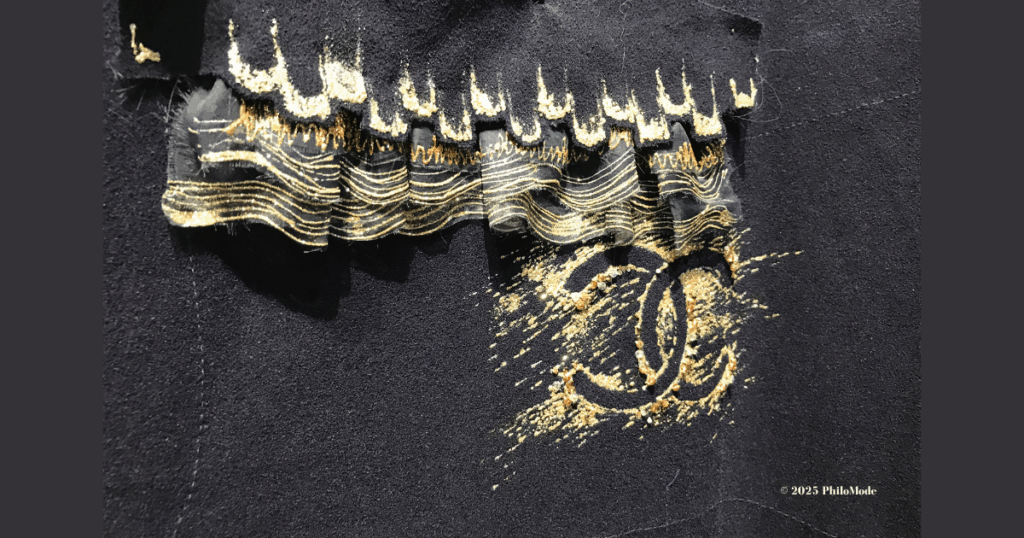
2. Métiers d’Art as CHANEL’s “Cultural Diplomacy”
The Métiers d’Art collection is CHANEL’s tribute to the virtuosity of its artisan ateliers.
But it is also something more—it is a series that tells geographic narratives.
Through each collection, CHANEL enters into a deep dialogue with the culture, aesthetics, and craftsmanship of a particular place, reimagining its historical memory through the language of contemporary beauty.
In 2022, the house traveled to Dakar, the capital of Senegal, where the rich colors, beadwork, and embroidery of West Africa were reinterpreted through CHANEL’s savoir-faire.
Far from a decorative quotation of culture, the collection was the result of creative collaboration with local artists and craftspeople—a new form of cultural expression born from mutual respect and exchange.
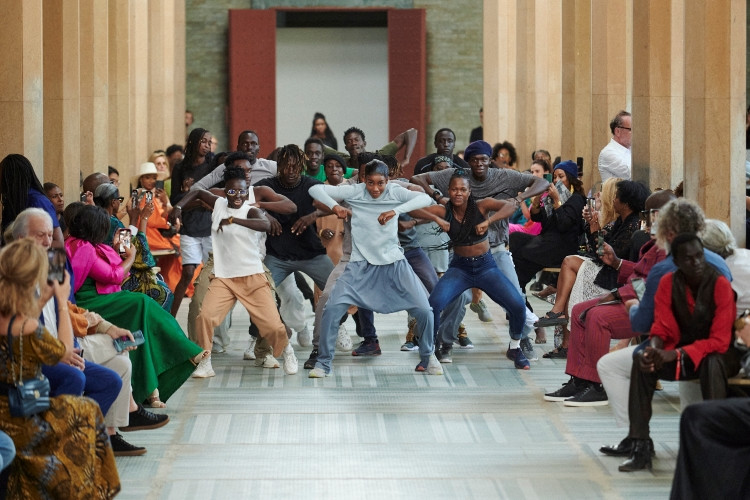
image by CHANEL
In 2023, CHANEL chose Manchester, England, as its stage.
Here, the traditional textile of tweed met the spirit of rebellion and melancholy embodied by the city’s music culture—bands like Joy Division and Oasis.
This collection became a crossroads of industrial heritage and subcultural identity, beautifully embodying Manchester’s dual nature: gritty and poetic, working-class and avant-garde.
Then in 2024, the narrative shifted to Hangzhou, China.
The city’s poetic scenery—seen in the Coromandel screens that Gabrielle Chanel loved—became a key to unlocking a dialogue between CHANEL’s craftsmanship and traditional Chinese artistry: lotus motifs, jade tones, and lacquerwork.
A historical capital now reborn as a tech metropolis, Hangzhou became the canvas for CHANEL’s lyrical fusion of classicism and innovation.

CHANEL does not merely wave the flag of “global luxury.”
Rather, it engages deeply with place and culture—functioning as a cultural interlocutor, not just a brand.
Let us now take a closer look at the cultural fabric of each city.
Dakar, the capital of Senegal, stands as a vibrant epicenter of West African music, art, and literature.
Marked by a complex history of colonization and independence, the city is a living archive of resistance, resilience, and creativity.
It is also home to some of the most influential voices in Sub-Saharan contemporary art. In music, genres like mbalax and hip-hop are not simply styles but parts of everyday life.
CHANEL’s decision to stage a collection in Dakar may well have been a gesture of translation—rendering the city’s living, breathing culture and its inherited beauty into a new visual language.
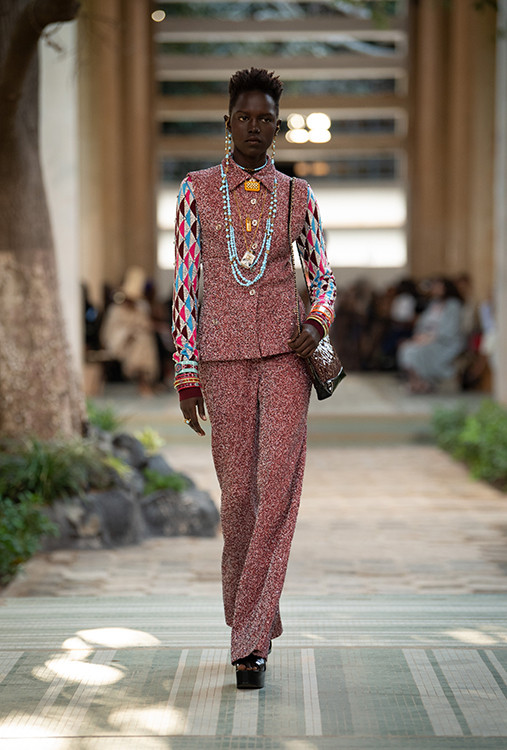
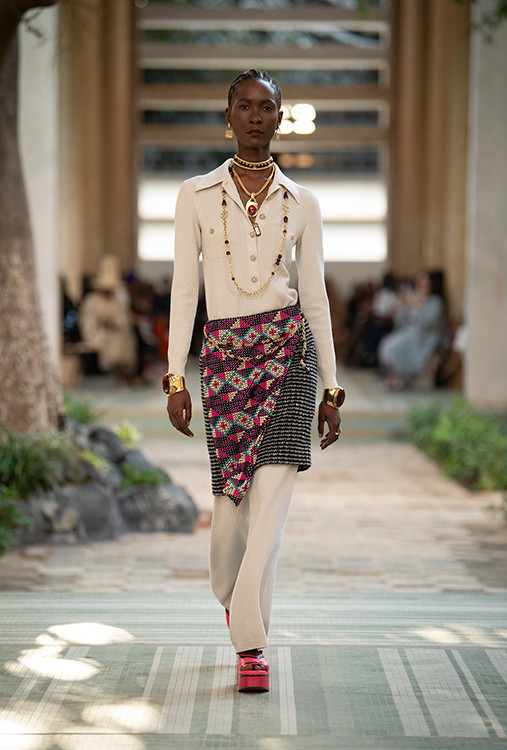
image by CHANEL
Manchester rose to global prominence as a cradle of the Industrial Revolution, earning the nickname “Cottonopolis” for its booming textile trade.
Yet the city’s identity extends far beyond its industrial roots.
From the late 20th century onward, Manchester became a seismic force in pop and alternative music—home to bands like Joy Division, New Order, and Oasis.
This was a place where the grit of the working class met lyrical introspection, giving birth to a raw, rebellious kind of beauty.
CHANEL’s collection captured this spirit of defiant elegance, weaving it into the fabric of tweed—a house signature—while paying homage to the city’s dual nature: wild and intellectual, grounded and visionary.
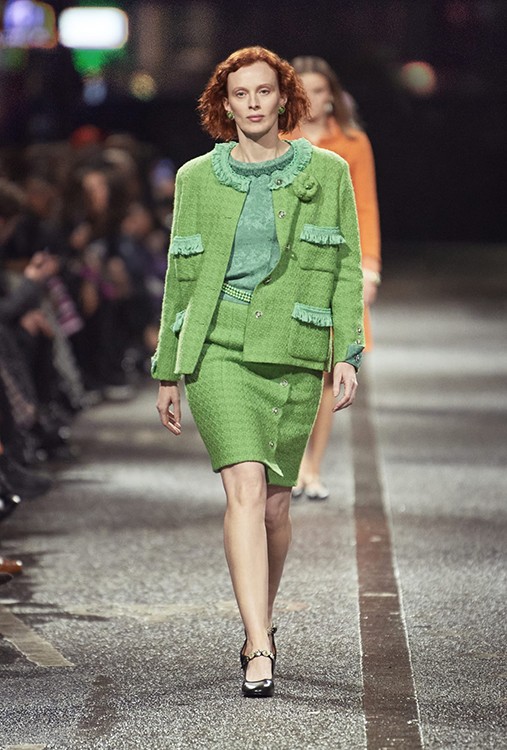
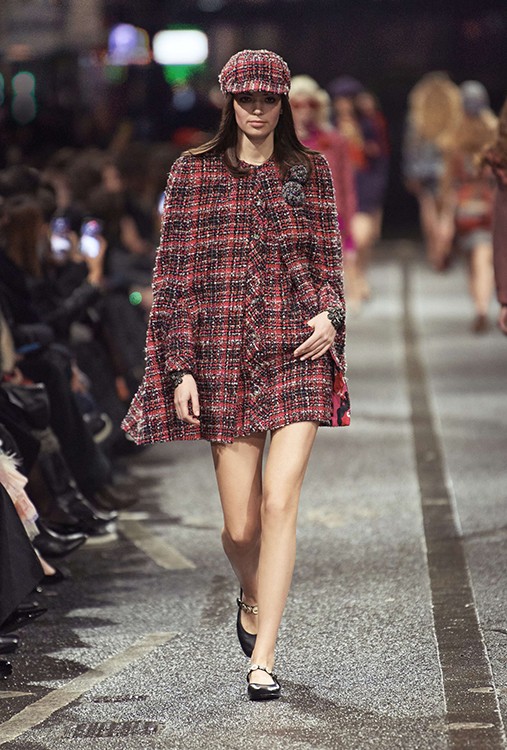
image by CHANEL
Hangzhou, the capital of China’s Zhejiang Province, was once the seat of the Southern Song dynasty.
Its beauty has long been immortalized in Chinese poetry and painting—most famously through the tranquil vistas of West Lake.
As a locus of classical refinement (fengya), Hangzhou holds a singular place in the country’s cultural history.
Today, the city is also a rising tech hub, home to giants like Alibaba—a rare place where tradition and innovation coexist in dynamic tension.
The Coromandel screens that Gabrielle Chanel adored, decorated with evocative Hangzhou landscapes, serve as an aesthetic bridge between past and present.
In the 2024/25 Métiers d’Art collection, this city’s poetic memory was interwoven with CHANEL’s craftsmanship, resulting in garments that resonate with a quiet, contemporary lyricism.
3. The Archive as a Vessel of Memory — CHANEL’s Legacy of Time
CHANEL’s approach to the past reveals itself most eloquently in the way it treats its archives.
“Archive” in this context refers to the body of historical material that forms the memory of the house—documents, designs, textiles, Coco Chanel’s own writings, and key moments in the brand’s evolution.
These are not static relics but a living vocabulary from which the brand continues to speak.
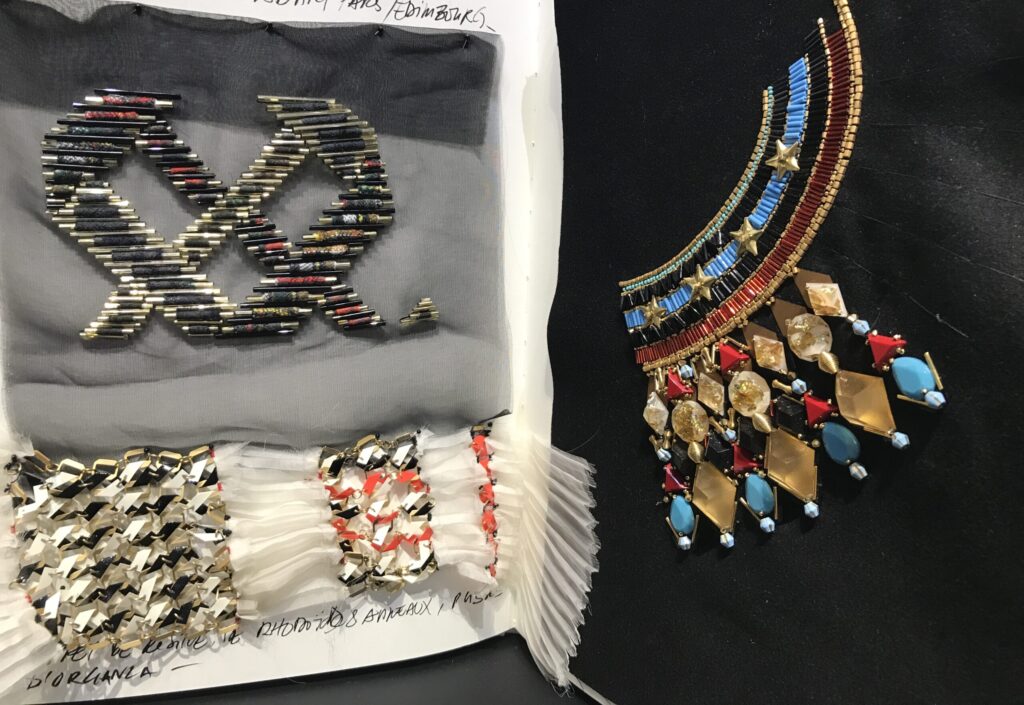
@Philomode
In the 2023/24 Manchester collection, CHANEL paired tweed with elements of 1960s and ’70s British culture—punk, mod, and their rebellious rhythm.
This was not simple nostalgia, but a reinterpretation: a remix rather than a replica.
At CHANEL, the archive is not a vault of dormant objects—it is a living resource.
These materials are used to sustain the brand’s visual identity and to weave new creations from its historical DNA.
Designs from past collections, for instance, often serve as conceptual springboards for present-day expressions of CHANEL’s evolving ethos.
Just as Karl Lagerfeld reimagined Coco Chanel’s symbols through a pop-art lens in his later years, the Métiers d’Art collections rework the archive as a form of living memory—an ongoing conversation with the past.
The CHANEL archive is more than a record; it is a storytelling device that binds history, culture, and vision into one coherent thread.
What makes this possible are the maisons d’art—Lesage (embroidery), Lemarié (featherwork), Massaro (shoemaking), and others—whose masterful hands carry the brand’s memory into the present.
Through their savoir-faire, CHANEL’s legacy of time continues to be spoken in the language of now.
4. Holding the Right to Interpret the Past — CHANEL as a Curator of Cultural Memory
To possess the right to interpret history and culture is not a neutral act.
It is inherently political—and deeply ethical.
It involves choosing which culture to speak about, how to speak about it, and most crucially, from whose perspective the story is retold.
In doing so, the question of “who tells the story” becomes just as important as “what is being told.”
For Western fashion houses engaging with non-Western cultures, there is always the risk of reinforcing historical hierarchies through acts of cultural borrowing—often unconsciously.
And in a visual medium as powerful as fashion, the line between appreciation and appropriation can be fine and fraught.
CHANEL, however, positions itself not merely as a fashion house but as a cultural narrator—strategic and careful in how it retells the memories of a place or time.
In the 2024/25 Hangzhou collection, for example, CHANEL avoided falling into the trap of superficial exoticism.
Instead, the house approached Chinese lacquer and craft traditions with depth and respect, reinterpreting them through its own creative lens.
It was not a case of “borrowing” culture, but rather “learning from” and “co-creating with” it.
In essence, CHANEL does not seek to own memory—but rather, to hold the right to reweave it.
Through this act, the House gains the authority to narrate—not by dominance, but through dialogue.
Though a fashion brand, CHANEL approaches culture with the curatorial care of a museum.
It is this distinctive posture—one of stewardship rather than spectacle—that has earned the Maison both reverence and trust.
5. Memory as a Bridge to the Future — What Does Heritage Mean to You?
What the Métiers d’art collections reveal is that heritage is not simply about preservation. It is about the will to continually renew.
Looking back with reverence, yet speaking in today’s language, today’s silhouette — this act of transformation is where memory quietly meets the future.
To wear memory is to retell it. To inherit not as repetition, but as reinterpretation.
Perhaps wearing Métiers d’art is, in itself, a form of cultural agency — a way of becoming part of the continuum.
As PhiloMode, we ask:
What shape does your memory take, when you imagine what you’d like to carry forward?
Perhaps it’s your mother’s hands sewing a hem.
Or the kasuri fabric tucked into your grandmother’s chest of drawers.
Maybe it’s the T-shirt you wore while listening to that one unforgettable song, or the embroidery discovered during your travels.
A thread of thought, a gesture passed down, a scene remembered each time you slip on a certain sleeve.
Heritage is not the possession of rare things.
It is the quiet continuity of something remembered, something retold — in the ways we dress, move, and remember.
How does it live on in your clothing?
Somewhere in your wardrobe, memory may still be breathing softly.
